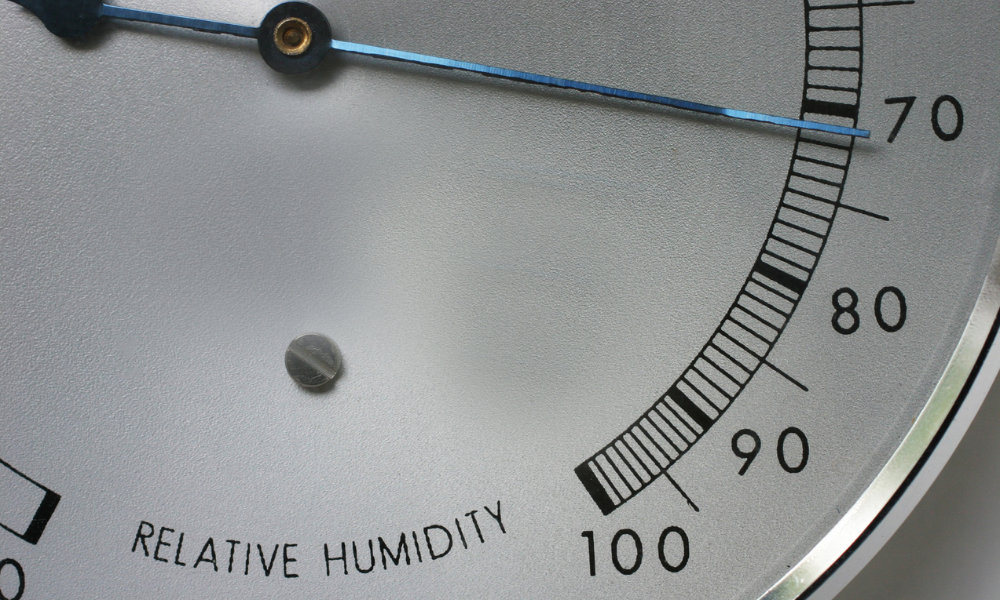Living in Florida means embracing sunshine, beaches, and plenty of humidity. While the tropical climate is beautiful, the excessive moisture can wreak havoc on your home. Left unchecked, humidity leads to mold growth, damages furniture, and negatively affects air quality. Fortunately, there are practical steps you can take to manage indoor humidity, prevent mold, and keep your home comfortable year-round.
Why Managing Humidity Matters
Indoor humidity levels should ideally be between 30% and 50%, according to the Environmental Protection Agency (EPA). Levels above this range can cause discomfort, encourage mold growth, and even increase respiratory problems. Florida’s high humidity, especially during summer, makes it crucial to take proactive measures. Mold remediation can cost homeowners an average of $2,500, with severe cases exceeding $10,000 (source: HomeAdvisor).
Keeping your home’s humidity in check is not just about comfort—it’s an investment in the health and longevity of your living space.
Use Dehumidifiers for Consistent Control
- Choose the Right Size: A small-capacity dehumidifier works for single rooms, while larger models can handle multiple spaces. Whole-house dehumidifiers are another option for comprehensive moisture control.
- Empty the Tank Regularly: Many models come with tanks that need to be emptied when full. Alternatively, connect the unit to a drain for automatic emptying.
- Place Strategically: Focus on areas prone to high moisture, such as basements, laundry rooms, and bathrooms.
According to Energy Star, energy-efficient dehumidifiers can remove up to 70 pints of water per day while keeping energy costs low. Investing in an efficient model saves money over time while improving indoor air quality.
Improve Your Home’s Ventilation
Proper ventilation plays a critical role in managing humidity levels. Without adequate airflow, moisture builds up, creating an ideal environment for mold and mildew. Here’s how to enhance your home’s ventilation:
- Install Exhaust Fans: Bathrooms and kitchens generate a lot of moisture. Exhaust fans help vent this moisture outside rather than letting it linger indoors.
- Open Windows and Doors: On cooler days, let fresh air circulate through your home. Cross-ventilation—opening windows on opposite sides of a room—is particularly effective.
- Use Ceiling Fans: Fans improve airflow and help evaporate excess moisture.
Regularly maintaining ventilation systems ensures they remain efficient. For example, cleaning exhaust fan vents annually helps prevent blockages that can reduce their effectiveness.
Invest in Proper Insulation
Insulation doesn’t just keep your home cool; it also prevents moisture from seeping in. Poor insulation allows warm, humid air to infiltrate your home, increasing indoor humidity. Key areas to address include:
- Attics and Walls: Ensure these areas are well-insulated to prevent outside air from entering.
- Windows and Doors: Seal gaps and install weather stripping to stop humid air leaks.
Spray foam insulation, for example, creates an airtight seal that not only improves energy efficiency but also reduces moisture intrusion. While the upfront cost averages around $1,500 to $3,500 for a 1,000-square-foot home (source: Angi), the long-term benefits are well worth it.
Combat Mold with Regular Maintenance
Mold thrives in humid environments, making regular home maintenance essential for prevention. Take these steps to keep mold at bay:
- Fix Leaks Promptly: Check for leaks in roofs, plumbing, and basements. Addressing them early prevents water damage and mold growth.
- Clean HVAC Systems: Mold spores often settle in heating and cooling systems. Regular cleaning reduces this risk and improves overall air quality.
- Use Mold-Resistant Paint: In areas prone to moisture, such as bathrooms, mold-resistant paint provides an extra layer of protection.
If you spot early signs of mold, such as discoloration or musty odors, act quickly. Use a mixture of water and white vinegar to clean affected areas, and consider professional help for larger infestations.
Keep an Eye on Indoor Humidity Levels
Monitoring your home’s humidity levels ensures you can address problems before they escalate. Hygrometers, available for as little as $10, provide real-time readings of indoor humidity. For added convenience, many smart home systems now include humidity sensors that send alerts to your phone.
If levels rise above 50%, take immediate action. Turn on dehumidifiers, increase ventilation, and identify any new sources of moisture.
Leverage Natural Solutions
In addition to appliances and home improvements, natural solutions can help manage indoor humidity:
- Houseplants: Some plants, like peace lilies and English ivy, absorb moisture and improve air quality. Just be careful—overwatering them can have the opposite effect.
- Charcoal Bags: Activated charcoal absorbs moisture and odors, making it an affordable option for small spaces.
- Salt: Place bowls of rock salt in humid areas. It’s a simple, low-cost way to pull moisture from the air.
These solutions work best as supplemental measures alongside dehumidifiers and proper insulation.
Long-Term Benefits of Humidity Control
Taking steps to manage humidity does more than protect your home from mold and damage. It also contributes to a healthier living environment by reducing allergens and respiratory irritants. Homes with consistent humidity control often have lower cooling costs, as dry air feels cooler and requires less air conditioning.
By investing in tools like dehumidifiers and maintaining proper insulation and ventilation, Florida homeowners can enjoy a more comfortable, efficient, and mold-free space.
